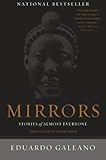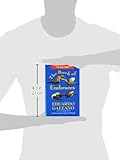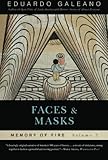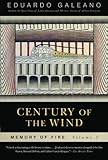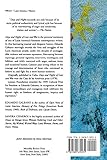The opening line from Eduardo Galeano’s Soccer in Sun and Shadow lays out the trajectory of the book: “The history of soccer is a sad voyage from beauty to duty.”
He goes on to say, “In this fin de siècle world, professional soccer condemns all that is useless, and useless means not profitable.” Ambitious in its scope as a history of soccer by emphasizing how soccer went from a largely amateur sport to a commercial juggernaut run by one of the world’s most prominent NGOs, the book maintains a strong thematic focus. While at times overly nostalgic, Galeano provides an incisive critique of how soccer has often been co opted in the service of political authoritarianism and commercial interests.
Soccer in Sun and Shadow begins with the basic protagonists of soccer’s spectacle (chapters titled “The Player,” “The Goalkeeper,” “The Fan,” The Goal,” “The Referee,” etc.), providing highlights of soccer’s history—from its beginnings (prototypes from China, Florence, and pre-conquistador Central America) to the 2010 World Cup in South Africa. Rather than providing an encyclopedic account of the major events in soccer history, the sport is described in small vignettes; many chapters span only a few pages. The episodic structure resists a grand narrative, instead focusing on small snapshots of a brilliant goal or the fraught reactions of a fan to a derby between Uruguayan clubs Peñarol and Nacional. These moments are loosely connected by the principle that soccer should be playful. The punchline to Giuseppe Meazza’s penalty goal against Brazil in the 1938 World Cup is that when his shorts fell down during his run-up to the ball, Meazza “grabbed his pants with one hand and sent the goalkeeper, disarmed by laughter, down to defeat.” Then there is the absurdity of Atilio Garcia of Montevideo’s Nacional, who, despite being viciously kicked and fouled en route, scored a brilliant goal against Boca Juniors of Buenos Aires. At this point, “Boca players surrounded the referee, demanding he disallow the goal because of the fouls they had committed.” For casual fans, a particular treat is reading about past legends of the South American game such as Artur Friedenreich, a black Brazilian star who broke race barriers in the Brazilian game: “To the solemn stadium of the white Friedenreich brought the irreverence of brown boys who entertained themselves fighting over a rag ball in the slums. Thus was born a style open to fantasy, one which prefers pleasure to results.”
Contemptuous of the focus on results, Galeano bemoans how regimented soccer players have become not only in how they play, but in how they manage their bodies. One of the profiles is of Ricardo Zamora, the Spanish goalkeeper who starred in La Liga between the two world wars. He stands in stark contrast to today’s players and their micromanaged diets and training regimens: “[Zamora] liked cognac and smoked three packs a day, plus the occasional cigar.” The modern player is an example of the body as investment, an entrepreneurial attitude toward one’s body that is geared solely for results.
As an antidote to this functional drudgery, Galeano fills the book with lyrical descriptions of players, fans, and other characters in soccer’s great drama. Here, he describes the goalkeeper: “The goal is soccer’s fiesta: the striker sparks delight and the goalkeeper, a wet blanket, snuffs it out…” The goal, even if it be a little one, is always a goooooooooooooooooooooal in the throat of the commentators, a ‘do’ sung from the chest that would leave Caruso forever mute and the crowd goes nuts and the stadium forgets that it is made of concrete and breaks free of the earth and flies through the air.” At times, this lyricism and metaphoric language runs into problems. The metaphor of the ball as a woman can be explained as a translation issue, since la pelota is a feminine noun in Spanish, but Galeano often describes the relationship between the player and the ball as a physical seduction:
“You see, she is easily offended. She cannot stand getting kicked or hit out of spite. She insists on being caressed, kissed, lulled to sleep on the chest or the foot. She is proud, vain perhaps, and it is easy to understand why: she knows all too well that when she rises gracefully she brings joy to many a heart, and many a heart is crushed when she lands badly.”
This passage has the unfortunate effect of offering us a vision of the ball as a victim of domestic violence, saved only by the man who, ostensibly, can grope her properly. A glaring omission, then, is that while Soccer in Sun and Shadow achieves much of its resonance in its attempt to reclaim soccer from powerful interests who claim it at the expense of players and ordinary fans, this fight is largely a fight between men. Women are notably absent and exist only as peripheral figures or something to be fought over. This absence becomes even more conspicuous in the updates to the original volume after 1998, since one of the major developments of the late 20th century is the rise of the women’s game. While it has yet to show its commercial viability as a professional league, if the book’s aim is to describe the game as a social practice that affects people beyond the utilitarian calculations of wins, losses and balance sheets, surely the increasing presence of women warrants mention.
In a chapter titled “The Opiate of the People?” Galeano explains how conservative intellectuals often view soccer as “precisely the superstition people deserve.” Meanwhile, “leftist intellectuals denigrate soccer because it castrates the masses and derails their revolutionary ardor. Bread and circus, circus without the bread: hypnotized by the ball, which exercises a perverse fascination, workers forget who they are and let themselves be led about like sheep by their class enemies.” But soccer’s popularity means that the sport is always in danger of being coopted by authoritarian governments and giant commercial interests, often at the expense of the fans and players. Former FIFA president Jean-Marie Havelange’s reign over the sport comes in for particular scorn. In his description of the 1978 World Cup, Galeano sets the scene by describing General Videla pinning a medal on João Havelange at Buenos Aires’s Monumental Stadium, a few steps away from the Navy School of Mechanics where political dissidents were tortured and a few miles from where dissidents were thrown alive from airplanes into the sea. The fawning words of Havelange, Henry Kissinger, and Berti Vogts (the West German captain) for Argentina under the Videla regime in the next paragraph contrasts with these brutalities, indicting the staging of the World Cup as willful ignorance at best and, at worst, collaboration in legitimizing the regime.
But soccer’s deployment as a form of soft power can be traced back to its introduction to the Americas. Soccer was imported into South America along with “blankets, boots, [and] flour” from England, manufactured from the “wool, hides and wheat” from South America. The sports that became popular through this exploitative relationship reflect the colonial arrangement: soccer for most of the world, cricket for former British colonies, and baseball for the Caribbean, where “the Marines shouldered bats next to their rifles when they imposed imperial order on the region by blood and fire. Baseball became for the people of the Caribbean what soccer is for us.”
The transformation of soccer into a global commodity producing billions in revenue cannot be discussed without mentioning television. In the chapter titled “The Telecracy,” Galeano explains how the games of the 1986 World Cup in Mexico were played under the broiling sun of noon to better accommodate the European television audience. Television, along with corporate sponsors such as Adidas, can make unilateral decisions on when games are played and the equipment used (the much-maligned Jabulani ball from the 2010 World Cup comes to mind, which is described as “the soapy, half-crazed tournament ball that eluded hands and flouted feet”). Their interests often supersede questions of player safety, the quality of play, and the convenience of fans traveling to see the games in person. Television money is often tied to progression in many of the major club competitions, such as the English Premier League and the UEFA Champions League, further consolidating the importance of results that lead to the technocratic management of teams and players that Galeano bemoans.
The question throughout—that you find yourself asking constantly—is what is soccer? Or rather, whose answer to the question is the most important? It is easy to dismiss it as yet another global commodification of spectacle owned by corporate interests. But it is also a practice—of play, of community, of artistic expression. The game is forced to conform to the demands of global capital while also being a site of resistance, a global commodity but also a space for local identity. Galeano has a passion and love for the game despite his horror at how the game is managed. He concludes by describing how much he already misses the 2010 World Cup despite his considerable objections to its organization. Nevertheless, he watched sixty-four matches, which left him “drained, muscles stiff, throat raw, but already feeling nostalgic.” He imagines a fan or a player from a vanquished team sitting alone in a stadium, unable to leave. It is perhaps fitting that the final scene paints a picture of a lone fan who experienced emotions so intense that it resembles the aftermath of trauma. The game may be too large for any single person, or book, to fully understand.
Jeong Chang received his PhD in Comparative Literature from the University of Oregon and currently teaches composition at the University of Tokyo. He specializes on the effects of globalization, neoliberalism, and late capital on depictions of care in global cinema.




